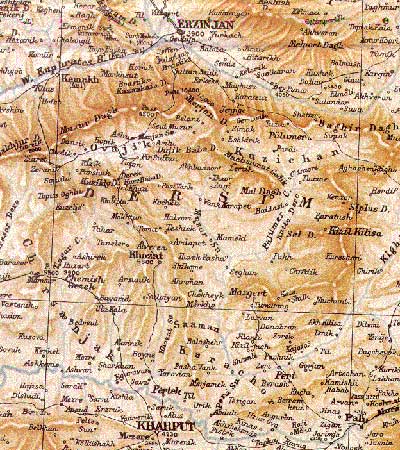
On February 8th in the Kurdish Institute of Paris, there will be an exhibition of Munzur Valley and Dersim pictures, from Northern Kurdistan. Though I guess that most readers of this blog could not go there, I publish the presentation written by both photographers, which is an interesting survey of Dersimi history.
“Located on the high northern plateaux of Kurdistan, the region of Dersim is rich of cultural, linguistic and religious particularisms. The etylomogy of the word Dersim is made by the vocable « Der »,meaning “door” and « sim » meaning silver in Kurdish. Both united elements mean then literally « Silver door », reminding probably the snow covered summit which enamel it.
This mountainous land is mainly inhabited by Alevi Kurds, different from else Kurds by their religion. This specific “alevism” include Zoroastrian and animist elements. A lot of people there speak one of the principal Kurdish dialect : kirmançki or le zazaki. There are also, especially in the south of the region, an important population speaking kurmanji dialect. Beside of Kurds, we can find a few number of Armenians, which rescued to the Genocide of 1915. Here and there, we can met a small Turkish minority.
For many centuries, Dersim resisted to foreign invasions and could preserve a kind of “authomony”. This situation persisted during the 2 first decades of the new Turkish Republic, created in 1923. After he has founded Turkey, Atatürk had a last task to achieve : « civilizing Dersim ». We understand better the nature of this « mission of civilisation » by reading one of his speeches pronounced in the Turkish Parliament : « Dersim is a une tumour for the government of Republic. Whatever it will cost, this tumour should be eradicate by a definitive operation » said the « Eternal Chief » of Turkey.

Sanjak of Dersim in 1901
Source: Map of Armenia and Adjacent Countries by H.F.B. Lynch & F. Oswa
Then, all is achieved without delay : In 1935 with a new law, the name “Dersim” is forbidden and the region received an else name, with a certain irony : “Tunceli”, i.e “Bronze hand” in Turkish. After preparations, the Turkish army, in 1937, went in the “Country of Oak people”», Dersim. The leader of the resistance, Seyit Riza, is arrested and executed in November 18th 1937, though he was 81 years old and law banned to execute a such old person. The operation last 2 years and had tragic results for the country : 80 000 deads and thousands of people deported to Western-Anatolia to allow their assimilation. For the first time, mountains of Dersim, considered as sacred for their inhabitants, abandoned Dersimi to their fate. They tasted defeat.
In the heart of the region, there is the chain of Munzur Moutains, of which the highest summit reaches 3462 meters. the river which crosses has the same name. Dersim presents an exceptionnal bio-diversity. Considering the richness of the country, on December 21th 1971, Turkish state gave to Munzur Valley the status of the « first national park in Turkey » and it is the largest of all the country. Valley is long of 80 kilometers. In Munzur Mountains, there are 1518 species of plants, among which 227 exist only in Turkey and 43 only in Munzur Valley. The natural richness of Dersim is equal as a whole country’s one… In the valley and Munzur chain we find too an important fauna, with species threatened to extinction, as brown bear, wild cat, wild sheep, moutainer goat with fang-horns ; in the river live red-scales trouts.
Dersim is then a rich land, but it is not protected against a possible disaster. This time, the region is threatened by an ecological catastrophe. For the Turkish state aims to build in the Munzur Valley eight dams and hydroelectric power stations. What could bring the construction of such dams to the region ? They’ll furnish 0,97 % of the total production in electricity for Turkey. What will be the consequences ?
In first, 84 villages will be drowned under water dams and it will cause irrevocable damage for the area which already lost a great part of its population because of the policy of depopulation practised by the Turkish State during its war against the Kurdish guerilleros in 1990s.
Secundly the region will be shared in 2 and then will lost its geographical unity, with the risk to create many economical and cultural problems.
Thirdly, radical changes of climate will happen and the endemic plants, the rare animals will lose their habitat, therefore will disappear. Finally, the Valley of Munzur, formed in 42 millions of years according to specialists, will be entirely destroyed. Experts think that a dam last in average 70 years, and after these years, only ruins will remain, instead of the the paradisiac beauty of the valley.
We hope that these exhibition of pictures could will give you an idea of the region, that we love like Seyit Riza did.”
Sevim Ersahin & Tahir Karakas

Leave a Reply
You must be logged in to post a comment.